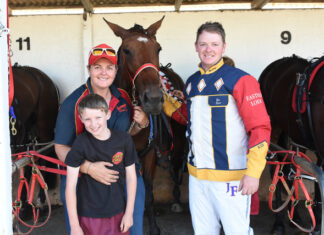JUST 64 Mount Gambier fishers will be able to catch snapper this year following the random draw for South Australia’s first recreational fishing ballot.
More than 3600 amateur anglers applied for the snapper lottery across the state, with just under 17pc of applicants receiving five snapper tags when the season opens on February 1.
Kingston was the most successful town in the Limestone Coast, with 37 fishers selected in the random ballot, while 14 Robe fishers and 11 Port MacDonnell anglers will receive the tags to be used in South East waters.
Nine Beachport fishers and eight Bordertown fishers were also successful.
Also included in the South East allocation was Victor Harbor and Goolwa, with 52 applicants from the area receiving the snapper tags.
The 606 individuals selected out of a randomly-selected ballot will be able to catch five fish during the season, which will run from February 1 to October 3, in a bid to rebuild the state’s snapper stock.
Anglers will not be permitted to catch snapper outside this period or without a tag.
Primary Industries and Regional Development Minister Tim Whetstone said recreational fishers had a fair and equal opportunity to win five snapper tags, which will be a requirement under the government’s new management model.
Mr Whetstone said the government’s move to annex 50pc of the 606 applications for South East applicants – which included the Limestone Coast, Kangaroo Island, Victor Harbor and Murray Bridge – demonstrated the importance of recreational fishing to country communities.
He said the ballot was an important mechanism of the new snapper management arrangements and would ensure snapper stock in the South East was not over-exploited while the fishery is closed in remaining state waters.
“This approach provides an opportunity for hundreds of recreational fishers to access a rewarding snapper fishing experience in our state,” Mr Whetstone said.
“Snapper fishing in the rest of the state remains closed as stock numbers are dangerously low – the science and anecdotal evidence from fishers all tell us this – and strong action must be taken to protect the fishery for the future.”
Mr Whetston said the tag system, as well as the total allowable catch for commercial fishers, was recommended by the Snapper Management Advisory Committee.
However, South Australian Fishing Alliance chair Graham Keegan expressed concern the lottery system was setting a precedent for the future.
Mr Keegan, who sits on the Snapper Management Advisory Committee, said he would not support the strict management system moving forward.
“When they did this in Western Australia a few years ago a heap of people from Perth got tags and of that 40pc never used them,” he said.
“Tagging is fraught with so many challenges, some people might not even use their five tags because the weather was not right when they went out.
“The South East has pretty hairy waters and people will be going out and targeting snapper, potentially in conditions they are not used to.
“Our alliance has never supported the ballot system, we said it was draconian and dangerous to send inexperienced people out on dangerous waters.
“Although I sit on the Snapper Management Advisory Committee, it does not mean I support the tagging system.”
Mr Keegan said the high number of applicants showed the current split between the recreational and professional sector was not adequate.
“Only 16pc of people who applied for tags, got tags,” he said.
“This shows us the 8pc allocation we get of the snapper pie in South Australia is way too small.
“In Victoria, the recreational fishers get 80pc of the catch and the commercials get 20pc.
“If the recreational fishers are unhappy with this, they have to scream really loud so we can do it a different way next year.”





